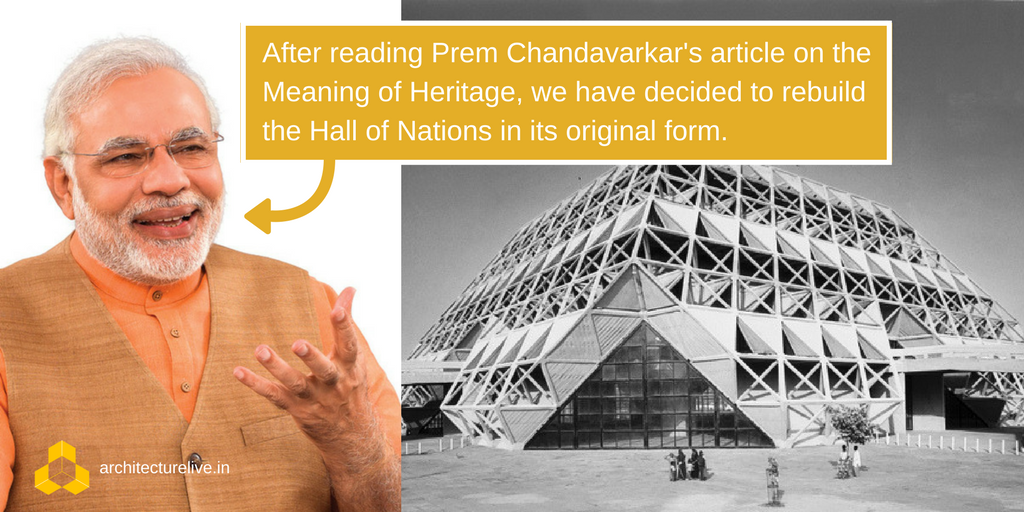The news that should cheer up the global architecture fraternity came from the PMO today morning. Prime Minister Shri Narendra Modi has directed the authorities to scrap the plans for building new ‘state-of-the-art’ conference facilities and rebuild the demolished Hall of Nations building again.
ALive! reached out the PMO to know the reason behind the sudden change in the decision. PMO stated that Shri Narendra Modi read Prem Chandavark’s article on the true meaning of Heritage on ArchitectureLive!, which resulted in this decision. PMO also shared that they whole-heartedly regret the decision of demolishing the Hall of Nations, which was not only an iconic structure but also was a symbol of modern heritage in India.
Further, PMO has also given instructions to all state governments, schools, universities across India, and government offices to sensitize everyone about the value of tangible and intangible heritage of India.
PMO also shared that today’s ‘Mann ki Baat’ would be about the heritage of India and the ways in which architects can recover their full fees from clients.
And, we wish, it wasn’t April 1 today.. Sigh! #TakeItEasy








